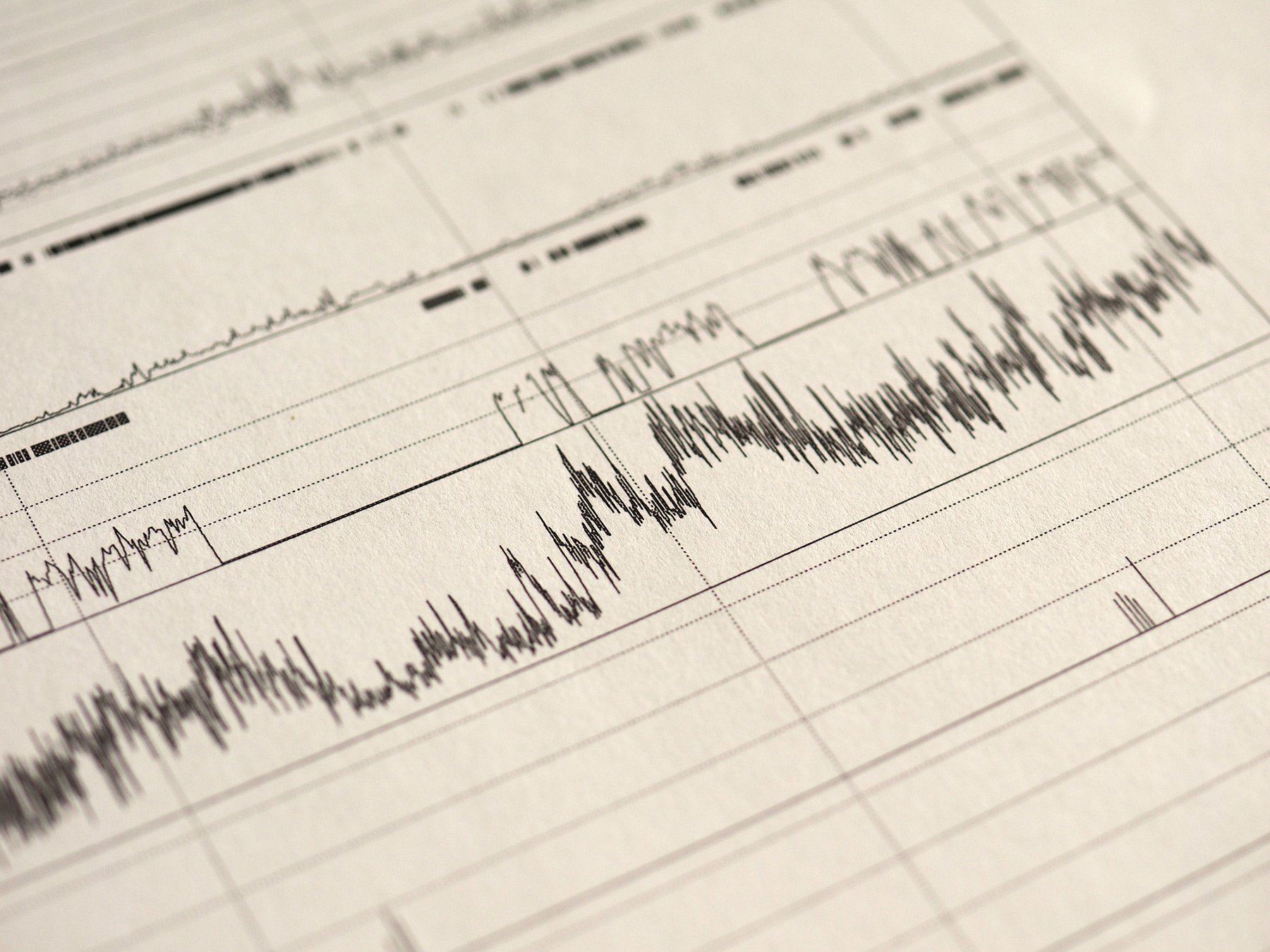
Comprehensive Sleep Study (Polysomnogram)
Polysomnograms are the most accurate sleep studies.
Typically the are done at a sleep center while a sleep technologist monitors the signals and data as they are collected. New technology allows us to do the same sleep study at home.
We review the raw data of each polysomnogram four to six times before conclusions are made.
A polysomnogram (PSG) is the gold standard in overnight sleep testing. It is a comprehensive recording of various physiological signals that occur during sleep, including brain waves, eye movements, muscle activity, heart rate, breathing patterns, and oxygen levels.
The test is usually conducted in a sleep laboratory or clinic, and involves attaching sensors and electrodes to the patient's body to monitor their sleep activity. The data collected during the test is then analyzed by a sleep specialist to diagnose any sleep disorders and develop a treatment plan.
Polysomnography is a commonly used diagnostic tool for conditions such as sleep apnea, narcolepsy, and restless leg syndrome, among others. It can also be used to monitor the effectiveness of treatment for sleep disorders.
Different types of PSG’s & other related sleep tests
-
We use a special home polysomnography device called the Nox A1S that records most of the channels such as EEG recorded during an in-lab sleep test, however, this test can be set up in the comfort of your own home.
The main differences are:
• You set up the test yourself and go to sleep
• There is no one watching you sleep or assisting you from the clinic at your home.Many people find this home PSG option has richer data than a standard home sleep test.
-
A PSG titration is a follow-up sleep study that is conducted after a polysomnogram (PSG) to determine the optimal pressure level for continuous positive airway pressure (CPAP) therapy in patients with sleep apnea. The test involves gradually increasing the CPAP pressure until the patient's breathing abnormalities are effectively treated.
-
As an Inspire-trained sleep center, we follow all protocols for screening patients for this outpatient procedure. We also provide the necessary care after the implant has been placed.
30 days after you receive an Inspire implant to treat obstructive sleep apnea, the device is then activated in our office. The patient is given a Inspire sleep remote device, and initial settings are established. The patient uses Inspire each night for 2-3 months and adjusts the amplitude using the remote to find a level that gives them comfortable, restful sleep. After arriving at the best settings, the patient has an overnight sleep study, where stimulation levels can be adjusted to optimize patient outcomes. Inspire is customizable, so any adjustments can be made simply at our office.
-
The Multiple Sleep Latency Test (MSLT) is a diagnostic test that measures a person's tendency to fall asleep during the day. It involves taking multiple naps throughout the day while being monitored for brain activity, eye movements, and muscle tone. The test is commonly used to diagnose conditions such as narcolepsy and idiopathic hypersomnia.
-
The Maintenance of Wakefulness Test (MWT) is a diagnostic test that measures a person's ability to stay awake during the day. It involves having the person sit in a quiet room and avoid sleep while being monitored for brain activity and other physiological signs. The test is commonly used to evaluate a person's ability to perform safety-sensitive tasks, such as driving or operating heavy machinery.
Accuracy
A sleep technologist monitors the signals while being collected to ensure accuracy and troubleshoots as needed.
A machine algorithm with artificial intelligence analyses data and and makes the initial interpretation.
Another sleep technologist reviews the data around 2-3 times to edit the AI interpretation of data.
A sleep physician reviews all the above to ensure accuracy and will generate the report.




